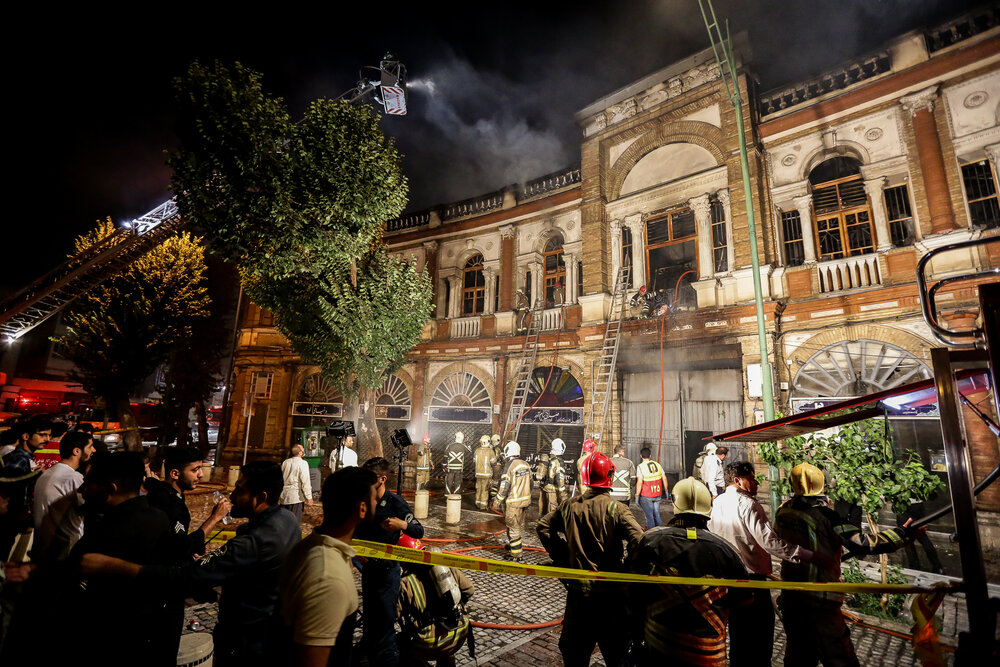Damage to Hassanabad Sq. to be compensated soon

TEHRAN – Iran’s tourism chief has said that damage to Tehran’s Hassanabad Sq., which was on fire late on Wednesday, will be compensated as soon as possible.
Ali-Asghar Mounesan, the director of Cultural Heritage, Handicrafts and Tourism Organization, also expressed regret at the incident in a Thursday tweet, referring to the fire damage, CHTN reported.
With reference to the importance of Hassanabad’s historic square as a part of Tehran’s identity, the official announced formation of a special task force to determine the cause of the incident and to compensate for the damage.
“The cultural heritage organization has always paid attention to the Hassanabad Square because it is part of Tehran’s identity registered as a national cultural heritage,” Mounesan wrote.
A special task force has been set up to coordinate with other responsible authorities as soon as possible to trace the cause of the incident by the judicial and urban authorities, he said.
A 500-square meter storehouse went on fire late on Wednesday. The fire spread to other centuries-old premises round the square, however, it was put out by the fire brigade.
Hassanabad, also spelled Hasanabad Sq., is named after an old and historical area of the same name, which is situated in the Monirieh district of the Iranian capital.
The area was originally developed during the reign of the Qajar era (1789–1925).
Following the 1979 Islamic Revolution, the square was renamed to the 31st of Shahrivar, in commemoration of the invasion of Iraqi bombers to the Iranian air bases. However, the new name did not remain and it was reverted to Hassanabad.
The surrounding buildings of Hassanabad Square were designed by Iranian-Armenian architect Qelich Baqelian, with the structural engineering provided by fellow Iranian-Armenian architect Leon Tadosian, according to Wikipedia.
The square is surrounded by four identical buildings, each covering one corner of the square. After the revolution, the Cultural Heritage, Handicrafts and Tourism Organization made efforts in order to re-construct the damaged portions of the buildings. As part of the reconstruction, two additional blue glassy modern floors owned by Bank Melli Iran were added onto the old structure of one of the four buildings.
Like many other Qajar-era buildings, the surrounding buildings of Hassanabad reminds us a successful integration of earlier Persian crafts and architecture with that of Western influences.
AFM/MG

Leave a Comment